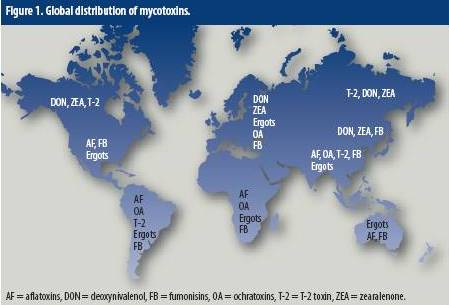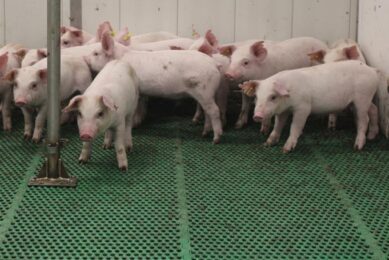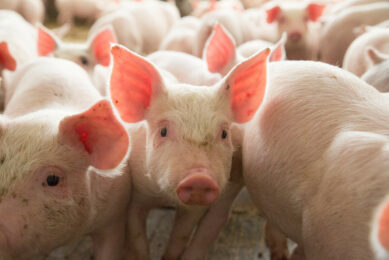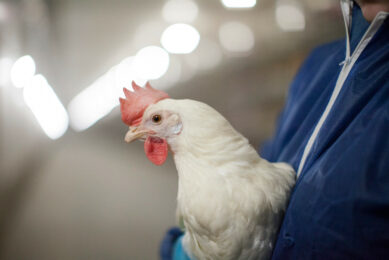More awareness of mycotoxins Part 2. Current thoughts on global mycotoxicoses in pigs

The immediate challenge chemists around the world face are related to masked mycotoxins and the means and modes of analysing them so that their masked effects can be quantified. In this short paper, demonstrated effects of the key mycotoxins on swine health and performance are highlighted, while referencing to their regional distribution.
By Dr H.V.L.N. Swamy, Alltech Canada
Mycotoxins are the secondary metabolites of moulds, which are ubiquitous in nature. There are close to 500 mycotoxins that have been identified to date, and undoubtedly there are many more to come. Four genera of mycotoxin producing moulds on a global scale include Aspergillus, Fusarium, Penicillium and Claviceps.
As for mycotoxins, harmful to swine health and performance, the group includes aflatoxins, ochratoxins, Type A trichothecene Fusarium mycotoxins, Type B trichothecene Fusarium mycotoxins, fumonisins, zearalenone, and ergot alkaloids.
Classifying the mycotoxins to a specific region has been curtailed in recent years due to the extended trading of grains and meals across the world as well as appreciable changes in the global climatic conditions. Unexpected drought, rainfall and floods added more mystery to the already complex issues of sampling and mycotoxin analysis. Nevertheless the greater prevalence of a specific group of mycotoxins to a particular region can be generalised (Figure 1).
Comparative toxicity
Unlike poultry, the information on systematic comparative toxicity of mycotoxins in pigs is not available. Based on the literature information available and field experience, the severity of key mycotoxin toxicities on pig performance (weight gains or reproduction) can be ranked as: Aflatoxins (400 ppb) > Deoxynivalenol (DON, 1,000 ppb) > Zearalenone (around 1,000 ppb) > Ochratoxins (1,000 to 2,000 ppb) > T-2 toxin (3,000 ppb) > Fumonisins (10,000 ppb). It is worth mentioning that these observations were made assuming that individual mycotoxin was present without appreciable levels of other mycotoxins. Although aflatoxins are more toxic to pigs their presence at such levels is uncommon. On the other hand although fumonisins are least toxic among these mycotoxins, their presence at 10,000 ppb or even more can be a common phenomenon in corn.
Toxicity of some mycotoxins
The biggest challenge with mycotoxicoses is the non-specific nature of symptoms in the affected animals. As compared to poultry, the acute symptoms are relatively more specific in pigs at least for some of the most common mycotoxins. These can include zearalenone-induced reproductive disorders (hyperemic and enlarged vulva), fumonisins-induced pulmonary odema and DON-induced feed refusal. The effect of low levels of mycotoxins on immunity of pigs can still go unnoticed and this makes it very hard for swine producers to diagnose the issue and take subsequent prevention measures. The symptoms of mycotoxicoses, such as lowered feed intake, can also be due to poor management, nutrition and health. It is quite common under commercial conditions, therefore, to compare the mycotoxin results of swine feed with the symptoms on the farm to confirm mycotoxicoses. Acute and chronic toxicities of some of the important mycotoxins in swine are discussed here. In general, the toxicity of mycotoxins mainly depends on the dose and source of mycotoxins, and the duration of exposure.
Aflatoxins
Meissonnier and others (2005) recently reviewed aflatoxicosis in swine. Aflatoxin B1 (AFB1) is the most toxic followed by AFG1, AFB2 and AFG2. During acute aflatoxicosis in swine, almost all animals die within hours or days following the intoxication. During chronic aflatoxicoses, the first signs are significant reductions in feed intake and a depressed state of the animals. AFG1 can induce more severe liver pathology in pigs than AFB1 and both when present together can result in additive interaction. AFB1 concentration of 400 ppb seems to be the minimum concentration in feed to cause performance problems in pigs, however, the immunity can be compromised at levels as low as 280 ppb.
Chronic intoxication with aflatoxins reduce vaccine efficacy. Aflatoxins alter inflammatory reactions via inhibiting the normal functioning of macrophages, neutrophils and NK cells as well as through modulating cytokine production. The effect of aflatoxins on antibody production is not consistent while its effect on cell mediated immunity, especially lymphocyte proliferation, is well documented in pigs. Association of aflatoxins with other mycotoxins does not seem to induce synergic toxic effects except for fumonisin B1 (FB1). At higher concentrations (around 800 ppb), AF can affect reproductive efficiency of pigs and AFB1 and AFM1 residues can be detected in sow milk.
Ochratoxins
Although the ochratoxin group comprises seven compounds, only ochratoxin A (OA) has been found widespread as a natural contaminant of cereal grains. OA mainly affects protein synthesis and subsequently DNA and RNA synthesis. Kidneys are the major target organs for ochratoxins and as a result of kidney damage the animals increase their water consumption. Similar to aflatoxins, these groups of toxins are carcinogenic and can be detected in animal products, especially pork. The residual levels of ochratoxins in pork are highly regulated in some of the European countries.
Ochratoxins can reduce weight gain, feed intake and feed efficiency in pigs and can impair kidney function at levels as low as 500 ppb. There have been efforts to consider serum and kidney concentrations of OA as the biomarker for animal exposure. OA can reduce cell-mediated immunity of pigs and can delay the response to immunisation. Obviously this can lead to increased susceptibility of pigs to natural infectious diseases. Feeding OA to boars can reduce motility and longevity of spermatozoa.
Type A trichothecene Fusarium mycotoxins
The toxicity of these mycotoxins in swine has been recently reviewed by Meissonnier and others (2008). Their target organs mainly include the rapidly dividing cells lining gastrointestinal tract, the skin, and lymphoid and erythroid system. Although they are more toxic than type B trichothecene mycotoxins, their occurrence is sporadic. Pigs can be acutely exposed to T-2 toxin via oral, inhalation or topical routes. Death following acute intoxication with T-2 toxin may be a consequence of shock syndrome with reduced cardiac output and hypotension. Similar to DON, Type A trichothecenes can also reduce feed intake via altered brain neurochemistry.
Swine fed 5 to 10 ppm T-2 toxin displayed reduced feed intake and weight gain while complete feed refusal was observed at 16 ppm. Growing swine fed T-2 toxin became soporific and developed dermatitis and crusting of the skin on the snout, nose, oral commissure, ears and prepuce. Gastro-intestinal hemorrhagic syndrome has been associated with natural trichothecenes feed contamination in beef cattle and swine. The specific T-2 toxin induced oral lesions serve as an indicator of possible diet contamination with Fusarium toxins. Trichothecene A mycotoxins-induced immune suppression affects all the components of the immune system (inflammation, humoral and cell-mediated responses). Feeding swine 0.5 to 3 ppm T-2 toxin for 21 days reduced specific antibody levels to horse globulin and peripheral blood mononuclear cells stimulation.
Type B trichothecene Fusarium mycotoxins
The major mycotoxin belonging to this group is DON and it is generally considered as a marker for the presence of other Fusarium mycotoxins. Pig is the most sensitive domestic animal species to DON and DON-induced feed refusal and the subsequent growth depression has been causing major economic losses globally. The effect of DON in reducing feed intake has been related to elevated blood tryptophan and brain serotonin concentrations. DON is usually accompanied by fusaric acid as a co-contaminant and the loss of appetite is greater when they are present together. Pair-feeding studies in pigs have shown that feed refusal can explain most of the growth depression observed in pigs exposed to DON. When fed at low levels, however, pigs can consume DON-contaminated feed and may be exposed to its direct immunosuppressive effects.
Monocytes, macrophages, as well as T- and B-lymphocytes of the immune system can be cellular targets of DON and other trichothecenes. A great deal of research has been conducted on DON-induced IgA nephropathy in mice and elevated serum IgA concentrations have been noted in pigs. Feeding of up to 4.7 ppm DON for nine weeks to growing pigs resulted in dose-dependent reduction in secondary antibody response to tetanus toxoid. Feeding DON-contaminated grains can increase the incidence of stillborn piglets in gilts. Sows fed the same contaminated grains exhibited reduced feed intake, weight loss, lower serum protein and urea concentrations, and tendency for increased weaning to oestrus interval.
Fumonisins
Six different fumonisins (A1, A2, B1, B2, B3 and B4) so far have been isolated and their mechanism of action appears to be a disruption of sphingolipids synthesis in biological membranes. Although fumonisins toxicity in swine is characterised by pulmonary oedema, their effects on swine immunity seem to be of major commercial significance. In spite of discrepancy in the literature related to the concentration of fumonisins required to cause chronic toxicity in pigs, Rotter and others (1996) showed 11% decrease in weight gain when 10,000 ppb FB1 was fed to starter pigs. It is important to note that this level of fumonisin or even higher is very common in swine feeds as in some countries (such as USA) more than 50% of swine diets may contain corn.
Bouhet and Oswald (2007) recently reviewed the impact of fumonisin ingestion on the intestine. Fumonisins can alter intestinal epithelial cell viability and proliferation, modify cytokine production, and modulate intestinal physical barrier function. All these effects may lead to reduced nutrient absorption and/or increased disease susceptibility. Research from del Rio Garcia and others (2007) also concluded that the combination of aflatoxins and fumonisins at low concentrations can produce synergistic effects on altering the intestinal cellular morphophysiology. FB1 can also alter the cytokine profile and decrease the specific antibody response to vaccines.
Zearalenone
This is a very common Fusarium fungal metabolite and often found in association with either DON or nivalenol. Pigs are very sensitive to zearalenone-induced oestrogenic syndrome which is characterised by reddening and increased size of vulva, increased size of mammary tissue, abnormal lactation, infertility, pseudopregnancy, still births, abortions and rectal or vaginal prolapses. It has been recommended that 0.5 ppm zearalenone would have no serious effects on the reproductive efficiency of young gilts. This recommendation, however, needs a revisit as more information is now available on the previously described masked zearalenone. Unlike the reproductive function, growth performance in pigs is less affected by zearalenone and further research is needed to define its impact of on the immune system.
Ergot alkaloids
Ergotism is the disease caused by the ingestion of alkaloids contained in the sclerotia of Claviceps species. There are several ergot alkaloids detected in grains (sorghum, wheat, barley, oat and rye) used for swine feed and these are pharmacologically active compounds. The effect of feeding ergot-contaminated grain to pigs is not consistent, and ultimately depends on both the ergot content and the alkaloid concentration. Murphy (2006) suggested that the maximum tolerable ergot level in the diet was 0.10 and 0.05% based on average daily gain and average daily feed intake, respectively, corresponding to 2.07 mg and 1.04 mg alkaloid/kg diet. Increased intake of ergot-contaminated feed can cause a severe reduction in the growth performance of weaned pigs with or without an effect on feed intake. Ergot alkaloids can affect the reproduction of sows through the effects on prolactin levels. Because of the wide biological variation in both the quantity and quality of the alkaloids present in ergot sclerotia, it is very difficult to establish safe levels.
Mycotoxin interactions in pigs
Mycotoxins seldom occur in isolation in poultry feeds. Mycotoxins discussed above and many more occur together and by no means do the mycotoxins discussed above form a complete list. This co-occurrence makes the individual mycotoxin tolerance dose irrelevant (safe levels) and therefore, the mere presence of multiple mycotoxins in swine feed should be considered as a warrant.
Mycotoxin interactions within the body of pigs are very well proven (Table 1). These interactions are mainly additive in nature, but can be synergistic and antagonistic as well. It is important to note that the type of interaction can vary for different parameters in the same animals.
Source: Pig Progress Volume 25 nr 5











